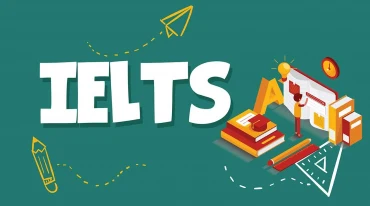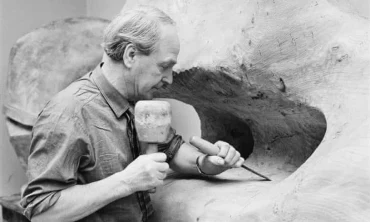
- 357 Lê Hồng Phong, P.2, Q.10, TP.HCM
- Hotline 1: 1900 7060
Hotline 2: (028) 3622 8849
Bài tập IELTS Reading: Ntrophy - Phân tích từ vựng
How a 20-year-old idea eventually became a moneyspinner
A. The story of how games designer Paul Wickens achieved success with his best selling game Ntropy is an object lesson to those who want to strike out on their own. Firstly, there's no need to rush. ‘I had the idea for what ended up as Ntropy - which, by the way, is a play on the word entropy, meaning chaos or disorganisation - about 20 years ago’, says Mr Wickens. ‘I was building structures with matchsticks while waiting for some friends in a bar. Later I made a scaled-up version of a box of matches, which we used to play with at college for hours on end’.
B. After leaving college, Mr Wickens, though interested in starting his own company and having designed another couple of games by then, took the safety-first route. ‘I got a job in IT as a programmer’, he recalls. ‘Later I moved into sales support in specific applications, mostly centred round e-commerce. For the most part I forgot about my games’. So what reawakened his interest? ‘It was about two years ago’, says Mr Wickens, ‘and there was a downturn in the IT industry. Several of my friends and even colleagues lost their jobs and a couple of them started their own companies. And yes, I suppose I did re-evaluate in the way you do when you think: “What would I do if I were made redundant?”’
C. What most people don't do is try to crack the £2 billion-a-year UK toy and games market. ‘I chose Ntropy’, he explains, ‘because it involves all the family. I wrote to several of the big games companies with a brief outline of my game and received a polite “Thanks, but no thanks” reply’. It is at this point, says Mr Wickens, that he began to think seriously about going it alone as an independent. ‘OK, I knew nothing about the UK toy market but I had a lot more general business experience than I did when I left college’.
D. The next step was to make a full replica of the game, mostly in his workshop - a converted garage at home. ‘Then I had to test it. My father helped here because he works at an outdoor centre. He gave it to people who had no idea who I was. I figured I had to get third parties to assess it and listen to what they had to say’. The result was a return to the workshop for ‘a fairly drastic redesign and some rule changes’.
E. Nevertheless, the designer was convinced by now that Ntropy had commercial potential. The next question was: ‘Am I prepared to spend what it takes for the next stage of development?’ On the money side, Mr Wickens says it represented his savings over 20 years and remortgaging his house. He set up a company, Tadpole Games - friends helped with the design and Logo for the firm and the game box - and he registered with the UK Patent Office at a cost of £4,000.
F. The next stage was to design the plastic base on which the stick structure could be built. Mr Wickens says: ‘A friend came up with the design and a firm I found used this very futuristic process called Selective Laser Sintering to produce the first mould. I kept the different parts of the project separate to protect it’.
G. Each Ntropy game consists of 64 identical sticks. ‘I could only have done this with the help of the Internet’, he says. ‘I spent weekend after weekend looking for a sustainable source of timber. In the end I found a firm in southern Thailand that used wood from rubber trees and could do it for about 20p a stick. It was also through the Net that I learned about letters of credit and shipping cargo on boats’.
H. After an anxious six-week wait, the container arrived. ‘I think it was a shock to my neighbours’, says Mr Wickens. ‘There were 700 boxes with 300,000 sticks. I checked some samples and they were the right size. I was overjoyed’. Too soon. ‘Over the next few days, I went through the other boxes and found around half of them weren't the exact size I needed. It's the first really big lesson I've learned. Never do a deal like this without going and checking it out first’.
I. Mr Wickens formally launched Ntropy to trade at the London by Fair. Then a stroke of luck, essential to all budding entrepreneurs, came his way. As he tells it: ‘I gave the game to a friend who was meeting some mates in the pub. They played and really enjoyed it. My friend rang the next day to tell me and added: “Oh, by the way, they work at Hamleys.”’ Hamleys is London's top toy shop. ‘Then their boss rang me to say, despite one or two concerns, “We like it, so let's give it a go.”’ The rest, as they say, is history. Ntropy took off and the first batch of 2,500 moved fast.
J. And the future? ‘I've just taken on someone to develop the commercial side of Tadpole’, says Mr Wickens. ‘If that works out, he will take a stake in the business. I want Ntropy to be a global product but I don't necessarily see myself as an out-and-out businessman. I already have another couple of games I'd like to develop’.
Questions 1-6
The passage has ten paragraphs labelled A-J. Which paragraph contains the following information?
Write the correct letter A-J in boxes 1-6 on your answer sheet.
1. A reference to an assumption Paul Wickens made that proved to be incorrect _____
2. A reason why Paul Wickens thought he was qualified to start his own games company _____
3. Paul Wickens's aim regarding the market for Ntropy _____
4. A description of a coincidence that proved fortunate for Paul Wickens _____
5. A reason why Paul Wickens began to consider his future _____
6. An explanation of the name Paul Wickens gave to his game ..........
ANSWER KEY
1. H
2. C
3. J
4. I
5. B
6. A
TỪ VỰNG TRONG BÀI
Strike out /straɪk/ (phrasal verb): thử một cái gì đó mới một cách độc lập (to start doing something new, independently of other people)
Downturn /ˈdaʊn.tɝːn/ (n): suy thoái (a reduction in the amount or success of something, such as a country's economic activity)
Mould /moʊld/ (n): khuôn (a hollow container with a particular shape into which soft or liquid substances are poured, so that when the substance becomes hard it takes the shape of the container)
Timber /ˈtɪm.bɚ/ (n): gỗ dùng cho sản xuất (trees that are grown so that the wood from them can be used for building)
THƯ VIỆN LIÊN QUAN

Reading là một trong bốn phần thi bắt buộc của bài thi IELTS, đây cũng được xem là phần thi thử thách nhất để chinh phục được band điểm cao. Hãy...

Bài viết cung cấp cho đọc giả Bài tập Reading part 3 - Chủ đề: Why fairy tales are really scary tales - Có đáp án

Bài viết cung cấp cho đọc giả Bài tập Reading part 2 - Chủ đề: The Desolenator: producing clean water - Có đáp án

Bài viết cung cấp cho đọc giả Bài tập Reading part 1 - Chủ đề: Henry Moore (1898-1986) - Có đáp án
Hoặc gọi ngay cho chúng tôi:
1900 7060
 | Chính sách bảo mật thông tin | Hình thức thanh toán | Quy định chung
| Chính sách bảo mật thông tin | Hình thức thanh toán | Quy định chung
Giấy chứng nhận đăng ký doanh nghiệp số 0310635296 do Sở Kế hoạch và Đầu tư TPHCM cấp.
Giấy Phép hoạt động trung tâm ngoại ngữ số 3068/QĐ-GDĐT-TC do Sở Giáo Dục và Đào Tạo TPHCM cấp